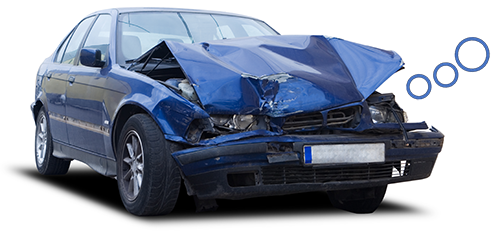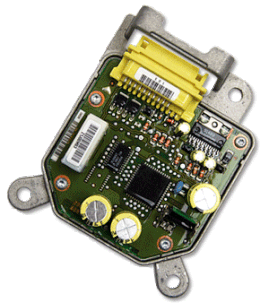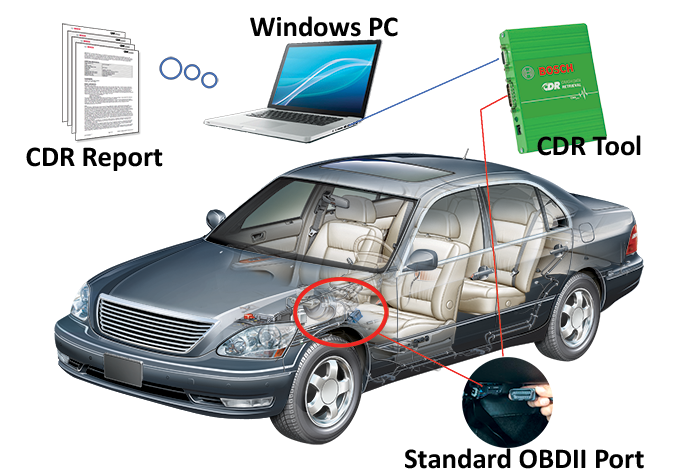EDR is an Acronym for "Event Data Recorder"
|
An Event Data Recorder (EDR) is a function or device installed in a motor vehicle to record technical vehicle and occupant information for a very brief period of time before, during, and after a crash solely for the purpose of monitoring and assessing vehicle safety system performance.
After a vehicle module’s primary functions are complete, and where appropriate thresholds are met, data may be recorded as part of the “Event Data Recorder” (EDR) functionality or capability. An “EDR” is not a stand alone device and the data may not always be recorded. EDRs may record: * information, but only after some physical event like a crash * vehicle dynamics information and system status for about 5 seconds before a crash * certain driver inputs for about 5 seconds before a crash * vehicle crash severity signature * restraint use and deployment related information * post-crash data such as the activation of an automatic collision notification (ACN) system EDRs DO NOT record: * the name of the driver * audio or video of the crash * names or the identity of passenger(s) * the places the car has been driven * information unless there’s been a physical occurrence like a crash |
Imaging (Downloading) Crash Data
|
In the context of CDR Tool technology, the word “image” is used to describe the process of saving a digital copy of the crash data which may be recorded in a supported vehicle to the person’s computer. Think of it being similar to a photographic image. When you take a picture of a vehicle, you are not physically changing or taking anything away from that vehicle, just getting an “image.” That vehicle is in the same condition as it was before the photograph. The CDR Tool simply retrieves an “image” of crash data which may be in that vehicle and copies that data – as an “image” – to your computer in a secure digital file.
EDR data (crash data) is currently used by law enforcement, private accident reconstructionists, auto manufacturers, auto insurance companies, fleet management and government researchers to assist in accurately evaluating crashes involving passenger cars, light trucks and SUVs. By retrieving and reviewing the crash data stored in these vehicle, potential fault, fraud, liability, witness accounts and other evidence can be more effectively evaluated. |
Also, available for use in vehicle testing is the Vericom VC4000DAQ Dynamometer and Braking Test Computer. It operates in two modes; braking and accelerating. The two most common uses in the braking mode are determining the coefficient of friction of the road surface, and analyzing the vehicle's braking ability. The common uses for the VC4000 in the acceleration mode are determining acceleration rates and times. The system is capable of analyzing a variety of input sources. These include lateral acceleration, reaction time, brake system pressures, brake pedal force application, and analysis of the vehicle electronic operational systems via the Diagnostic Link Connector (DLC-OBD II).
We also have available the Stalker Acceleration Testing System (STATS). This RADAR based system provides a detailed picture of the dynamics of acceleration, braking, or kinetic testing. The Stalker ATS software program displays the test results in various graphical forms and calculates exact performance statistics. The computer records the speed data, assigns time information, and calculates distance and acceleration rates for each data sample. The measurements are typically within 1/100th of a second.
We also have available the Stalker Acceleration Testing System (STATS). This RADAR based system provides a detailed picture of the dynamics of acceleration, braking, or kinetic testing. The Stalker ATS software program displays the test results in various graphical forms and calculates exact performance statistics. The computer records the speed data, assigns time information, and calculates distance and acceleration rates for each data sample. The measurements are typically within 1/100th of a second.


